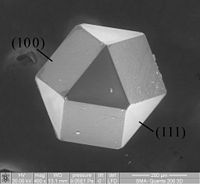
Photo from wikipedia
Due to complex nature of nearly all infrastructures (and more specifically concrete dams), the uncertainty quantification is an inseparable part of risk assessment. Uncertainties might be propagated in different aspects… Click to show full abstract
Due to complex nature of nearly all infrastructures (and more specifically concrete dams), the uncertainty quantification is an inseparable part of risk assessment. Uncertainties might be propagated in different aspects depending on their relative importance such as epistemic and aleatory, or spatial and temporal. The objective of this paper is to focus on the material and modeling uncertainties, and to couple them with soft computing techniques aiming to reduce the computational burden of the conventional Monte Carlo-based finite element simulations. Several scenarios are considered in which the concrete and foundation material properties, the water level, and the dam geometry are assumed as random variables. Five soft computing techniques (i.e., random forest, boosted regression trees, multi-adaptive regression splines, artificial neural networks, and support vector machines) are employed to predict various quantities of interest based on different training sizes. It is argued that the artificial neural network is the most accurate algorithm in majority of cases, with enough accuracy as to be useful in reliability analysis as a complement to numerical models. The results with 200 samples in the training set are enough for reaching useful accuracy in most cases. For the simple prediction tasks, the results were predicted with less than 1% error. It is observed that increasing the number of input parameters increases the prediction error. The partial dependence plots provided most sensitive variables in dam design, which were consistent with the physics of the problem. Finally, several practical recommendations are provided for future applications.
Journal Title: Soft Computing
Year Published: 2020
Link to full text (if available)
Share on Social Media: Sign Up to like & get
recommendations!